I clearly remember my excitement at spotting a grey heron on my first trip to the London Wetland Centre with my new DSLR camera. There it posed, completely motionless, while I faffed around with shaky hands, trying to ensure that my settings were correct.
A blessing for beginners
It was as though this bored looking individual could spot the signs of a beginner photographer a mile off and was patiently waiting for me to sort myself out. Right, got it in focus, composition sorted, click click. Click. Click. Click. It didn’t move, and the stillness I’d been incredibly grateful for not a few minutes previously, began to grate. I reminded myself that patience is key for wildlife photography and decided to wait it out. About an hour later, a chap with a camera slung around his neck who had walked past me earlier was on the way back and called out: “has it moved yet?” I shook my head, and he nodded a response that seemed to say: “typical heron”.
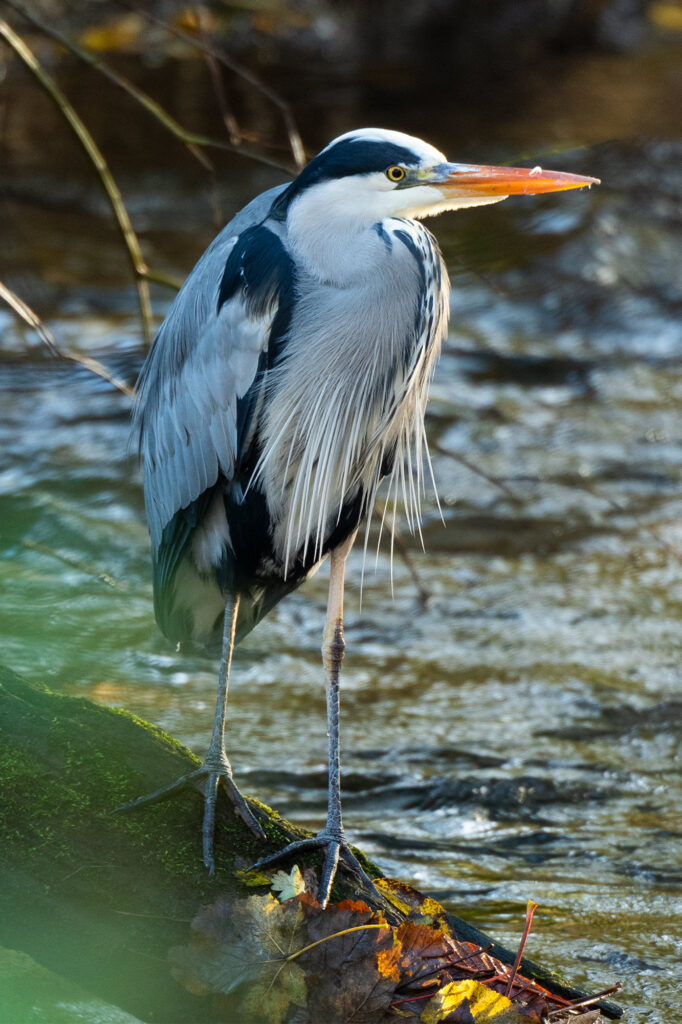
Yes, the heron is the perfect subject if you need a tall skinny bird that will stay still, staring straight ahead like a professional model for hours while you tweak your exposure compensation. It’s not so perfect when you want to progress to capturing action shots, as it tends to wait to lift off or take a step until you’ve got your head in your bag searching for your sandwiches. Or it does in my experience, anyway.
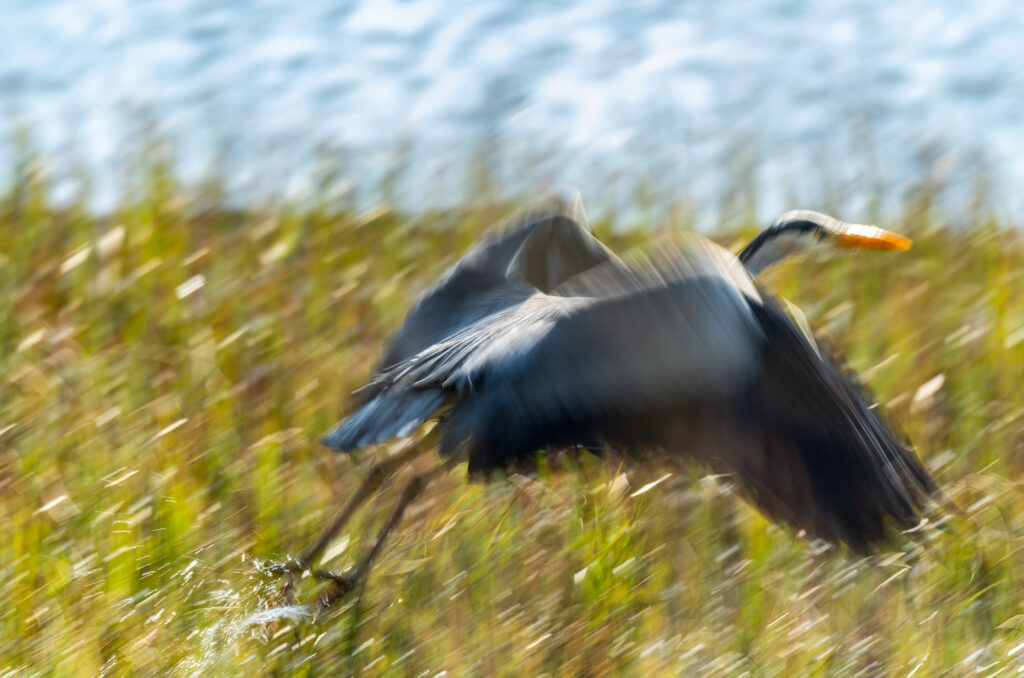
The heronry – a hive of activity?
After my initial inertia-filled encounters with herons at the London Wetland Centre, I decided to try to get to know them a little better. I volunteered for the RSPB as a HeronWatcher at Verulamium Lake in St Albans in March 2013. Every Spring, the herons return to their heronry, on the North Island of this urban park, to nest. The RSPB set up a stand with telescopes and a video camera to bring views of the nesting herons to visitors. By April, chicks are usually visible and making noise when parents bring their food in. In March, there wasn’t a lot of action to point out, and the freezing conditions meant that we had only a handful of curious onlookers brave enough to pause their walks to have a closer look at the bizarre-looking nesting arrangement. By the time we were finishing up for the day, it was snowing, and I couldn’t feel my feet. But I felt safe in the knowledge that I had at least learnt a bit more about this species and tried to see them in a more active light.
A heronry at Great Snowden’s Wood, near Brede in Sussex, contained around 400 nests in 1866; the one in Verulamium Lake seemed tiny in comparison. I can only imagine the sight and smell of it. It’s generally best to keep your distance and refrain from walking beneath one of these nesting sites. If disturbed, herons can regurgitate their last half-digested meal over anything that gets too close.
Flying and faeces
Photographing herons on the nest is one way of capturing them in a more animated state, but in flight is probably the easiest time to get some movement in your heron images. The bird in the image below seemingly appeared out of nowhere as we walked along the coastal path at Lunderston Bay. I captured it as it flew in front of the moody grey sky.
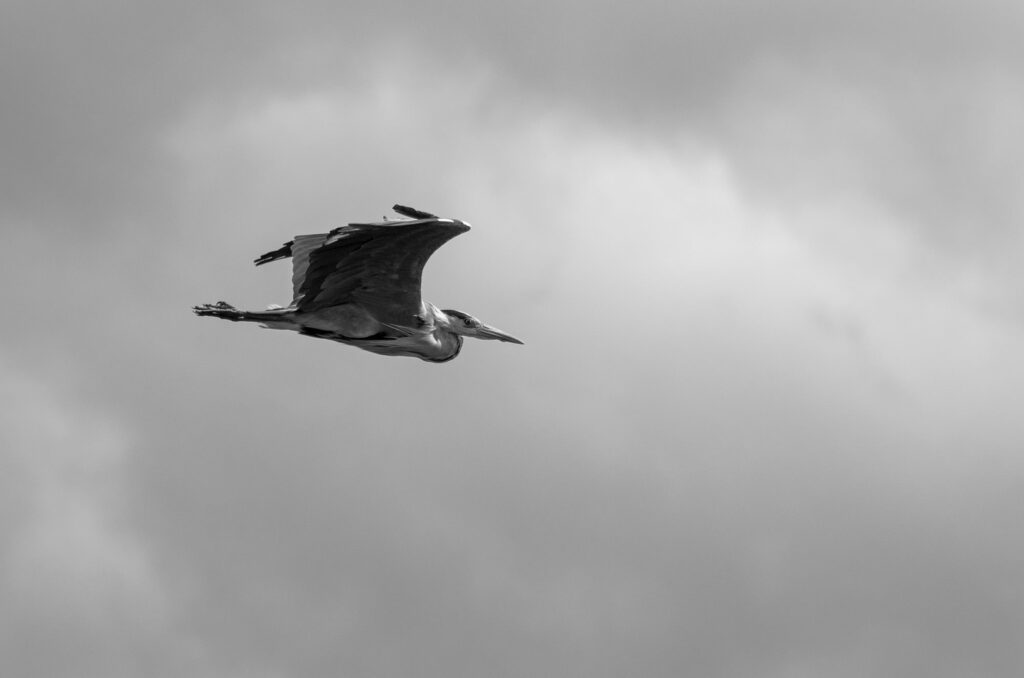
The grey heron lends itself well to a black-and-white conversion. The clue is in the name, I guess. But herons are also angular-looking, and their plumage has plenty of texture – both of which work well in monochrome, in my opinion. Again, though, in flight images should come with a health warning. My partner and I sat on a bench and watched a heron take flight from a distance at Glen Moss wildlife reserve. I watched it through my long lens but even without the benefit of that, my partner also clearly saw the long stream of faeces squirted out as it flew across the meadow towards us before banking away. After wishing for it to be closer, I was relieved it had flown off in the opposite direction in case another stream was coming.
One aspect of heron behaviour that is an obvious target for photography is the capturing and devouring of its prey. I haven’t managed this yet. However, I’m pretty sure that if I watched herons for long enough, I’d get there eventually. The closest I came to this was when I spotted the bird below as I strolled along the path by the river near my home. I glanced over the rusted metal railing and caught a glimpse of its long yellow bill and glaring eye that seemed to say: “keep walking”. And I did, for a few steps anyway.
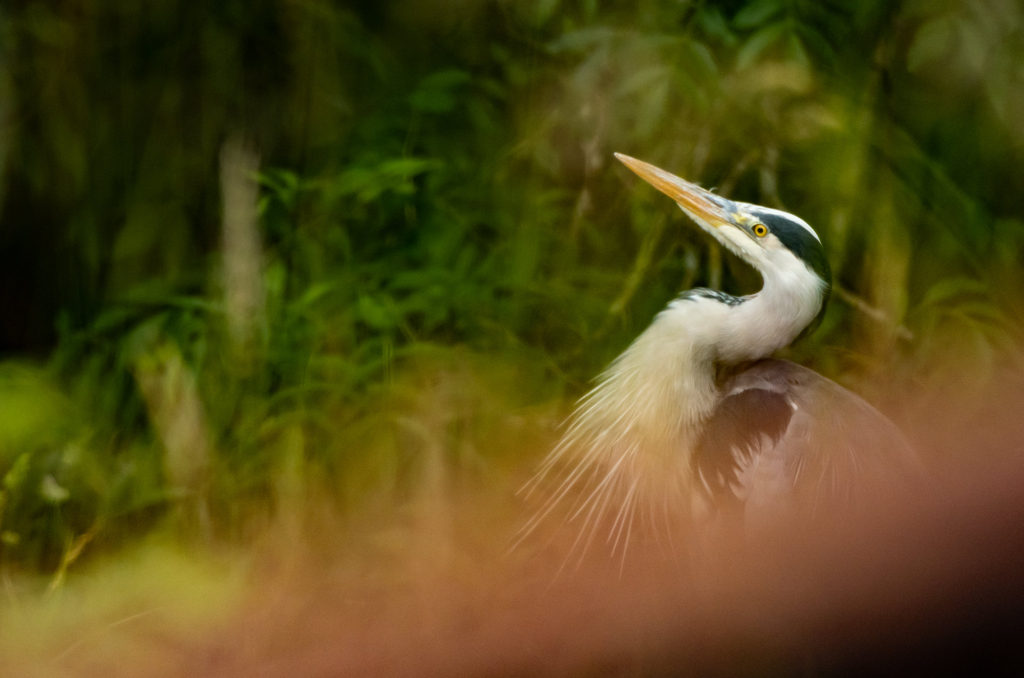
I waited until I could hide behind the tangle of brambles and turned to point my lens back at the bird, focusing through the foliage and the rust. The heron knew I was still close by, but I think it tolerated me because I was slightly less annoying than the lesser black-backed gull that kept mobbing it. The heron kept looking to the sky, waiting for the next swoop, and I kept shooting.
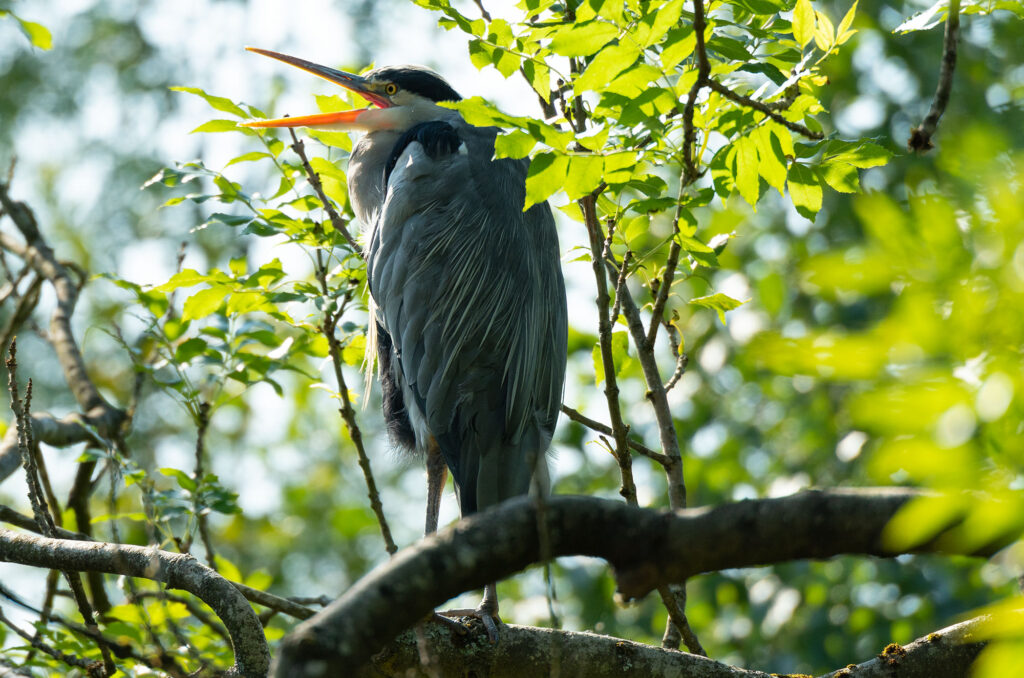
The grey heron is a consistent motionless feature of many of our waterways and is, therefore, often overlooked by photographers and passers-by alike. However, it can make for a rewarding subject with some fascinating behaviours – if you have the patience to capture them.

